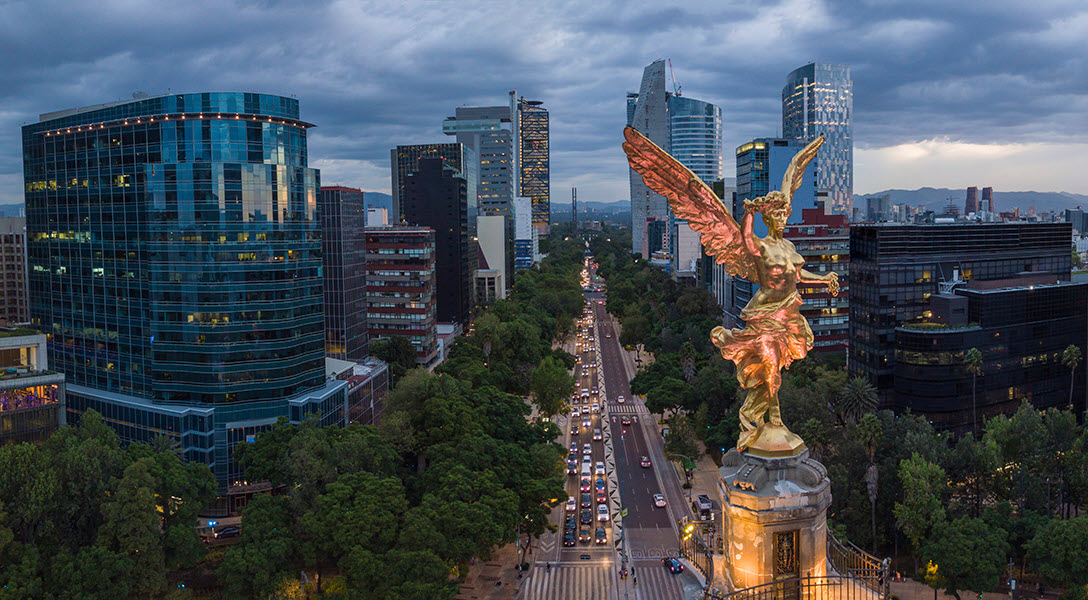
Mexico’s economy grows for fourth straight quarter; outlook improves
November 22, 2022
| October 2022 economic report | |||
| GDP, real July–September '22 |
Employment, formal October '22 |
CPI October '22 |
Peso/dollar October '22 |
| 4.1% q/q | 45,200 jobs m/m | 8.4% y/y | 20.0 |
Mexico’s GDP grew at an annualized 4.1 percent in third quarter 2022, an increase from the second quarter’s growth of 3.7 percent and above analysts’ expectations. As a result, analysts revised their GDP projections upward in October for the second month in a row (Table 1). Nevertheless, inflation and the looming risk of a U.S. recession remain headwinds for the Mexican economy.
| Table 1: Consensus forecasts for 2022 Mexico growth, inflation and exchange rate | |||
| September | October | ||
| Real GDP growth (Q4/Q4) |
1.9 |
2.1 |
|
| Real GDP (average year/year) |
2.0 |
2.1 |
|
| CPI (Dec. '22/Dec. '21) |
8.4 |
8.5 |
|
| Exchange rate—pesos/dollar (end of year) |
20.6 |
20.4 |
|
| NOTE: CPI refers to Consumer Price Index. The survey period was Oct. 24–28. SOURCE: Encuesta sobre las Expectativas de los Especialistas en Economía del Sector Privado: Octubre de 2022 (communiqué on economic expectations, Banco de México, October 2022). |
|||
The latest data available show growth in industrial production, exports, employment and remittances, while retail sales were flat. In October, the peso held steady, and inflation remained elevated.
Output grows in third quarter
According to preliminary estimates, Mexico’s third-quarter GDP grew an annualized 4.1 percent (Chart 1). The service-providing sector (wholesale and retail trade, transportation and business services) grew 4.8 percent, while output in the goods-producing sector (manufacturing, construction, utilities and mining) increased 3.6 percent. Agriculture increased 7.2 percent in the third quarter.
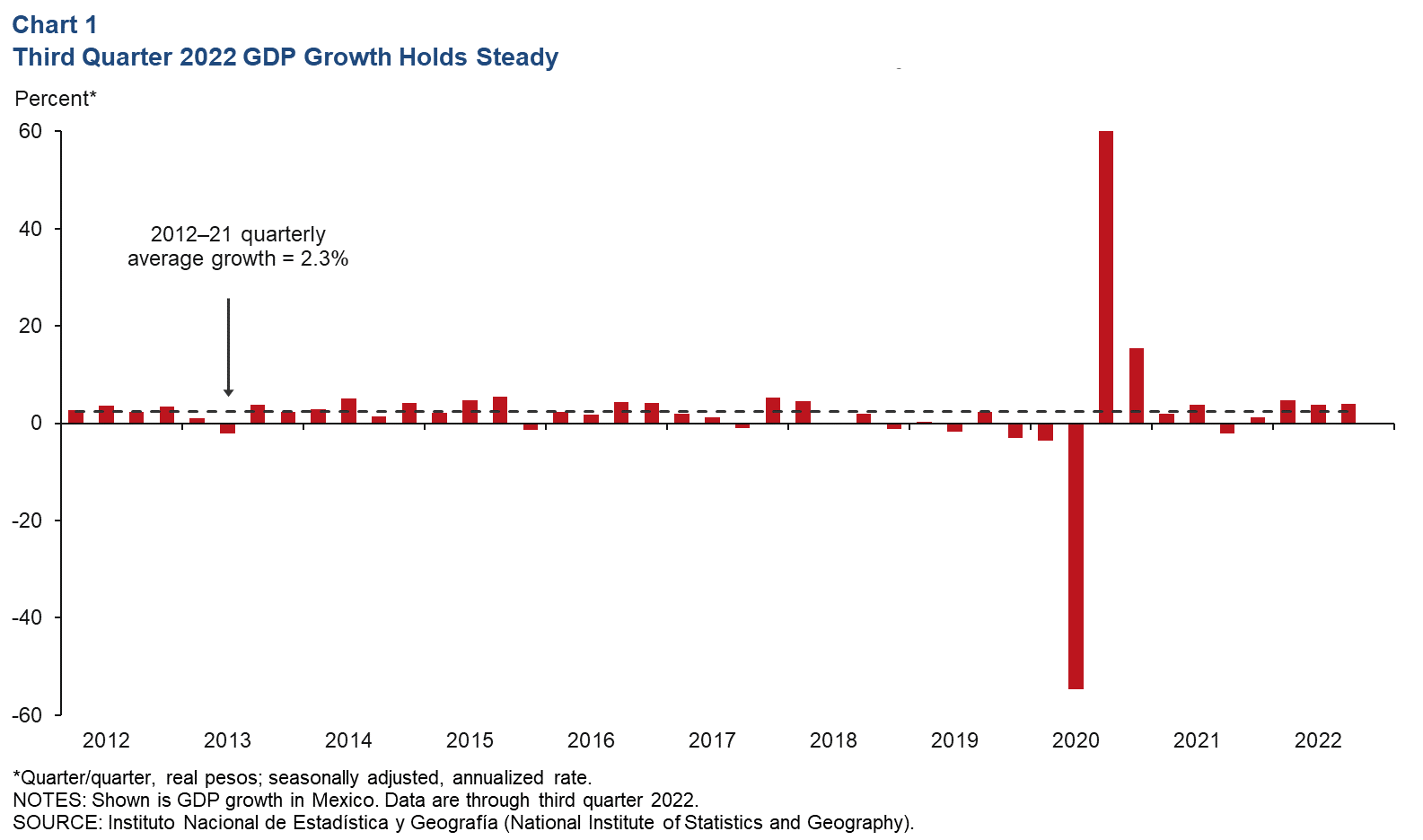
Industrial production ticks up
The three-month moving average of Mexico’s industrial production (IP) index—which includes manufacturing, construction, oil and gas extraction, and utilities—increased 0.2 percent in August from July (Chart 2). On a month-over-month and unsmoothed basis, IP was flat in August while manufacturing IP declined 0.1 percent. North of the border, U.S. IP rose 0.4 percent in September after staying level in August. The correlation between IP in Mexico and the U.S. has increased considerably with the rise of intra-industry trade between the two countries since the early 1990s. Mexico’s manufacturing sector could experience a slowdown in the near term, particularly if U.S. consumer demand decelerates as a result of high inflation and higher interest rates.
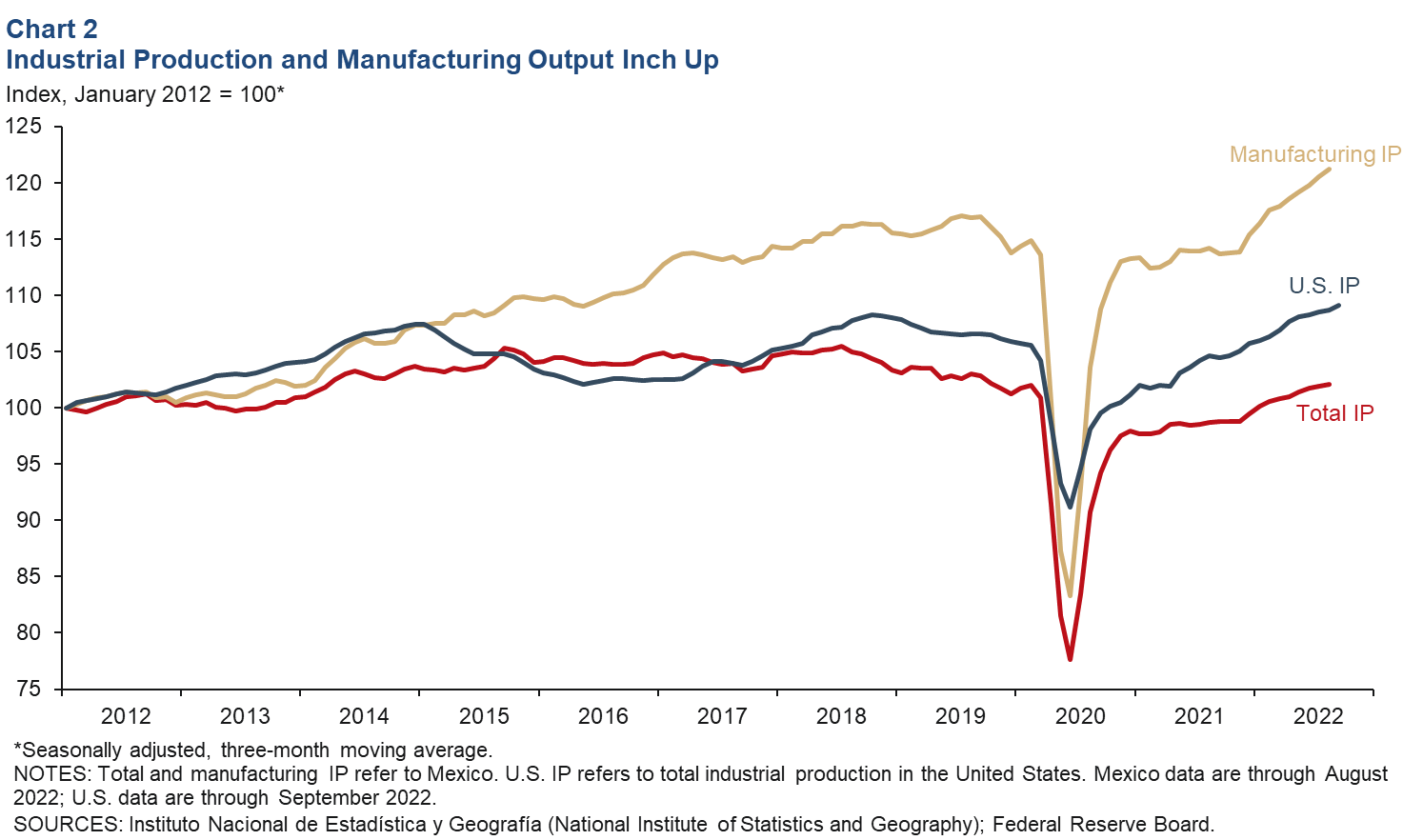
Exports improve in September
The three-month moving average of Mexico’s total exports was up 1.3 percent in September as oil exports fell 4.1 percent, but the much-larger manufacturing exports category rose by 2.0 percent (Chart 3). On a month-over-month and unsmoothed basis, total exports rose 4.6 percent in September, with oil exports rising 8.2 percent and manufacturing exports growing 5.3 percent. The rise in oil prices contributed to growth in oil exports earlier in the year, but oil exports are now declining as prices retreat. Year to date through September, total exports were up 10.1 percent, with manufacturing exports up 9.3 percent and oil exports surging 36.7 percent compared with the same period in 2021.
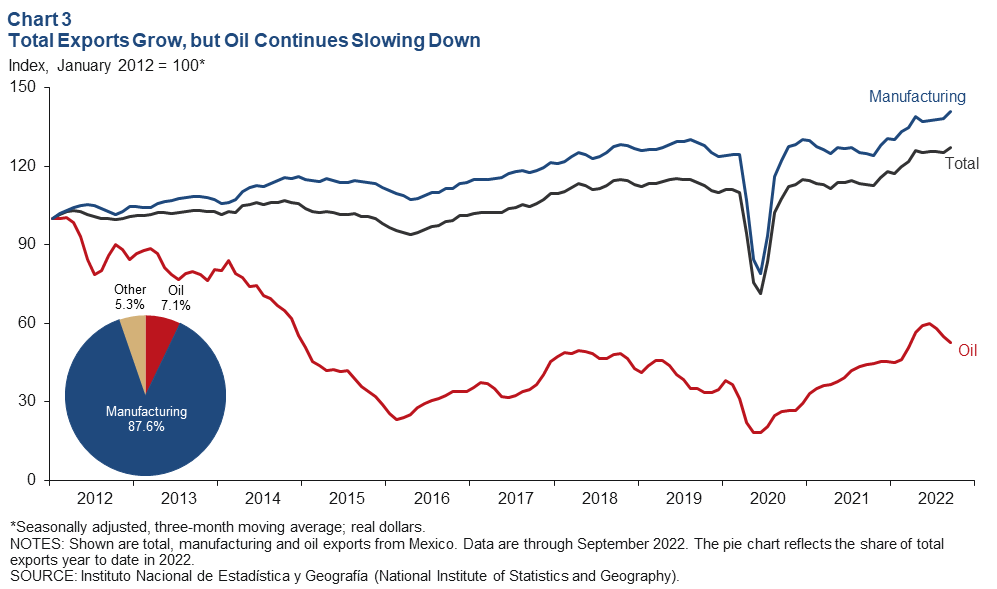
Retail sales plateau
The three-month moving index of real Mexico retail sales was unchanged in August from July (Chart 4). On a month-over-month and unsmoothed basis, retail sales declined by 0.4 percent in August. Strong growth in remittance flows may be contributing to the elevated level of retail spending despite high inflation domestically.
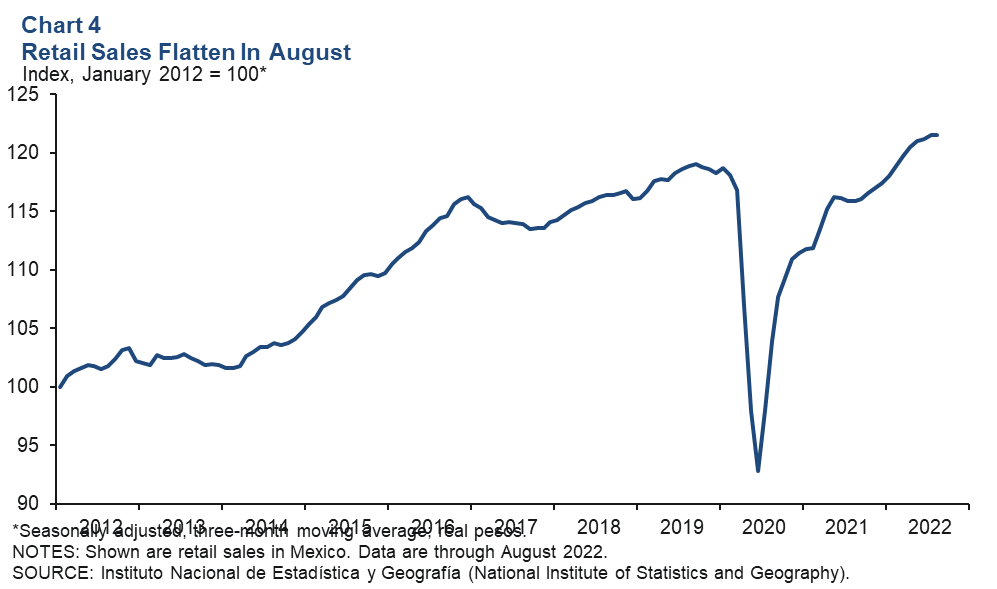
Payroll gains continue
Formal sector employment—jobs with government benefits and pensions—grew an annualized 2.3 percent (40,100 jobs) in October after increasing 2.4 percent in September (Chart 5). Year-over-year employment growth was 4.1 percent in October. Year to date, Mexico’s economy has added over 700,000 jobs. Total employment, representing 57.4 million workers and including informal sector jobs, was up 3.9 percent year over year in June. The unemployment rate in September was 3.1 percent, down from 3.3 percent in August.
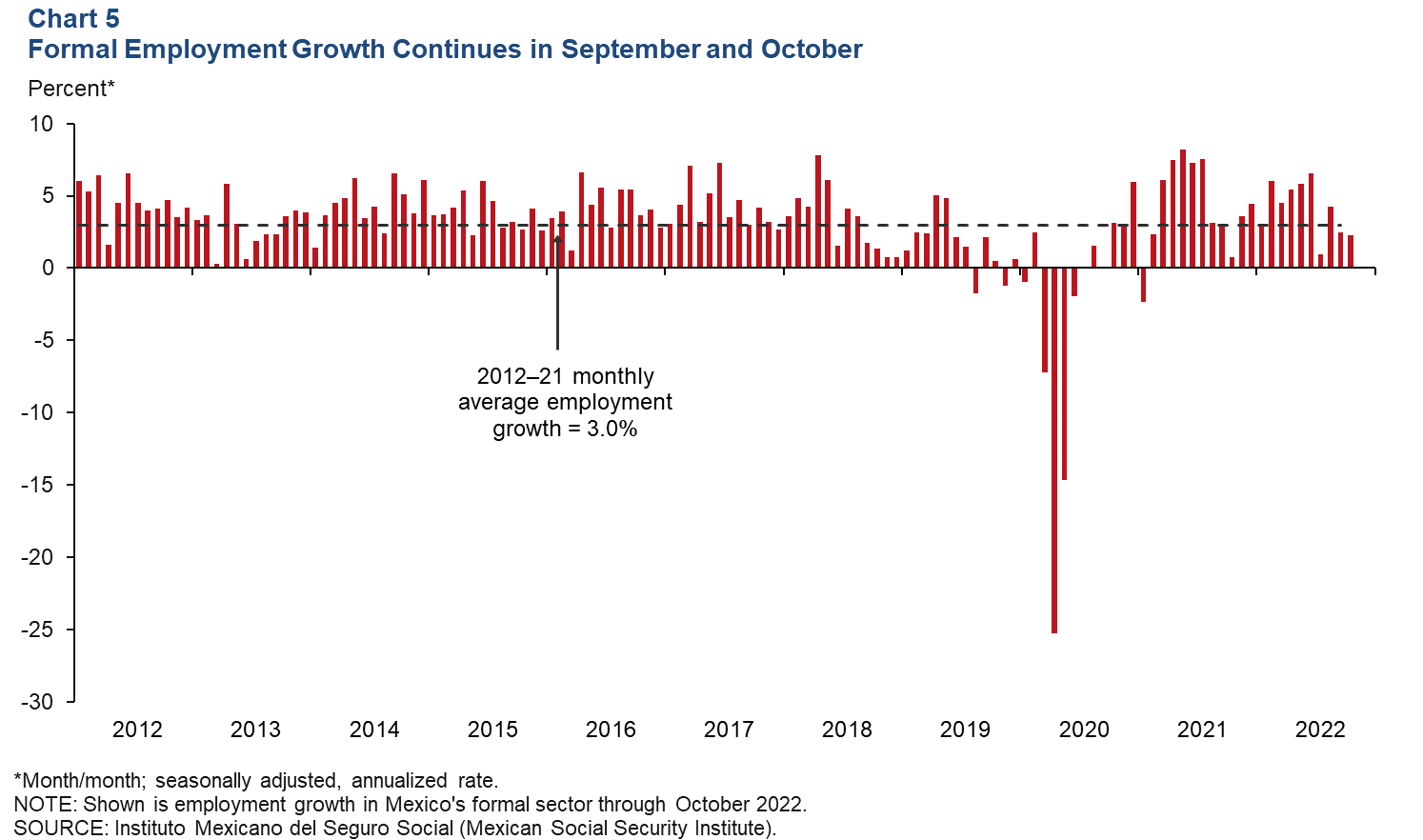
Peso retains strength in October
The Mexican currency averaged 20.0 pesos per dollar in October, down slightly from September (Chart 6). However, the peso is still down 5.7 percent from its prepandemic level in February 2020. The peso has been under pressure due to inflation and increased uncertainty regarding domestic and global growth, but it has remained relatively stable over the last two years as Mexico’s central bank has aggressively raised domestic interest rates in anticipation of and in response to U.S. interest rate hikes this year.
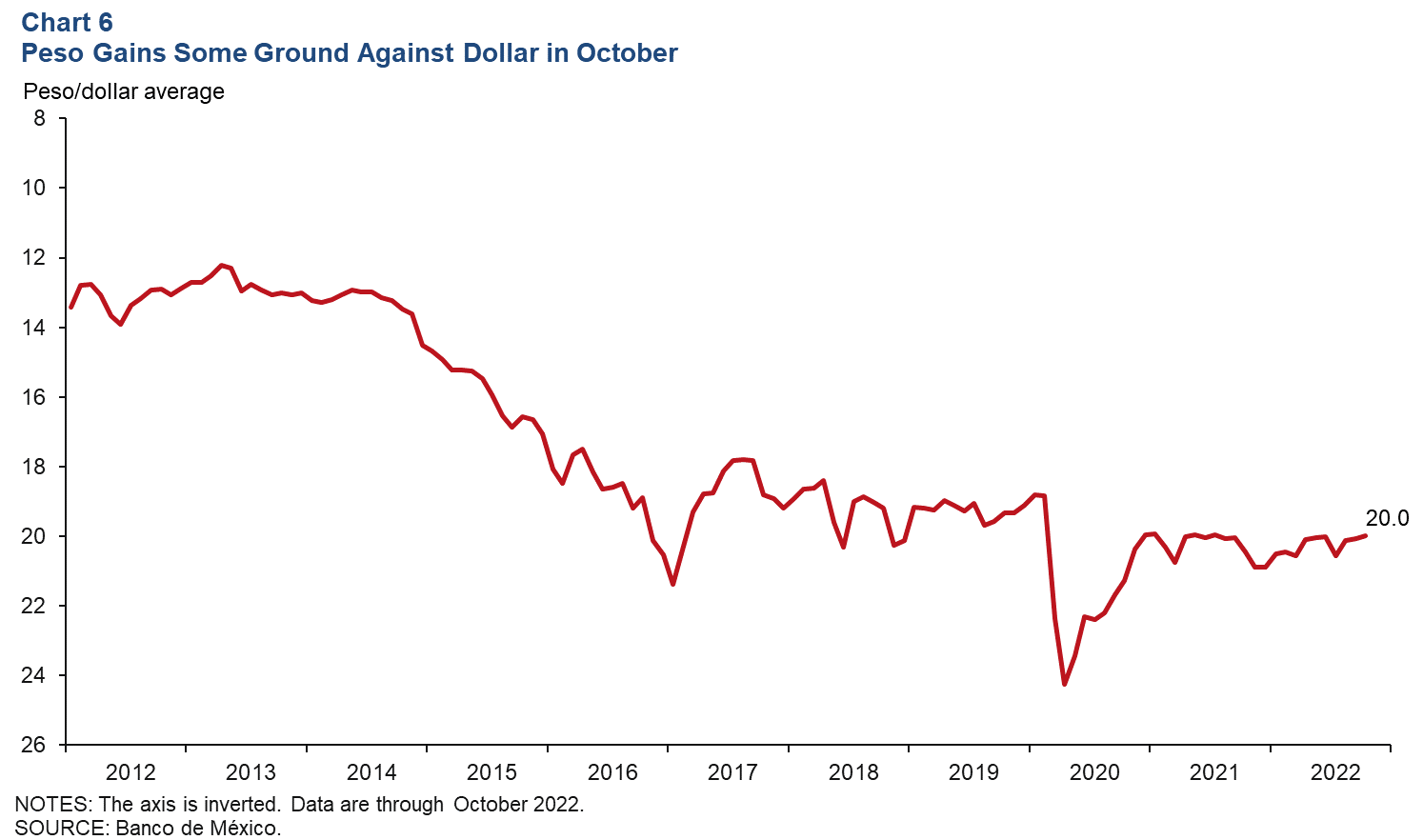
Remittances to Mexico continue growing
The three-month moving average of real remittances to Mexico rose 0.8 percent in September after dropping 0.2 percent in August (Chart 7). On a month-over-month and unsmoothed basis, remittances rose by 3.1 percent in September after falling 3.3 percent in August. Most likely, remittance flows to Mexico slowed at the beginning of 2022 due to inflationary pressures in the U.S. and elsewhere, which eroded disposable income, including funds for remittances. However, remittances to Mexico bounced back in May and have been on an upward trend since then.
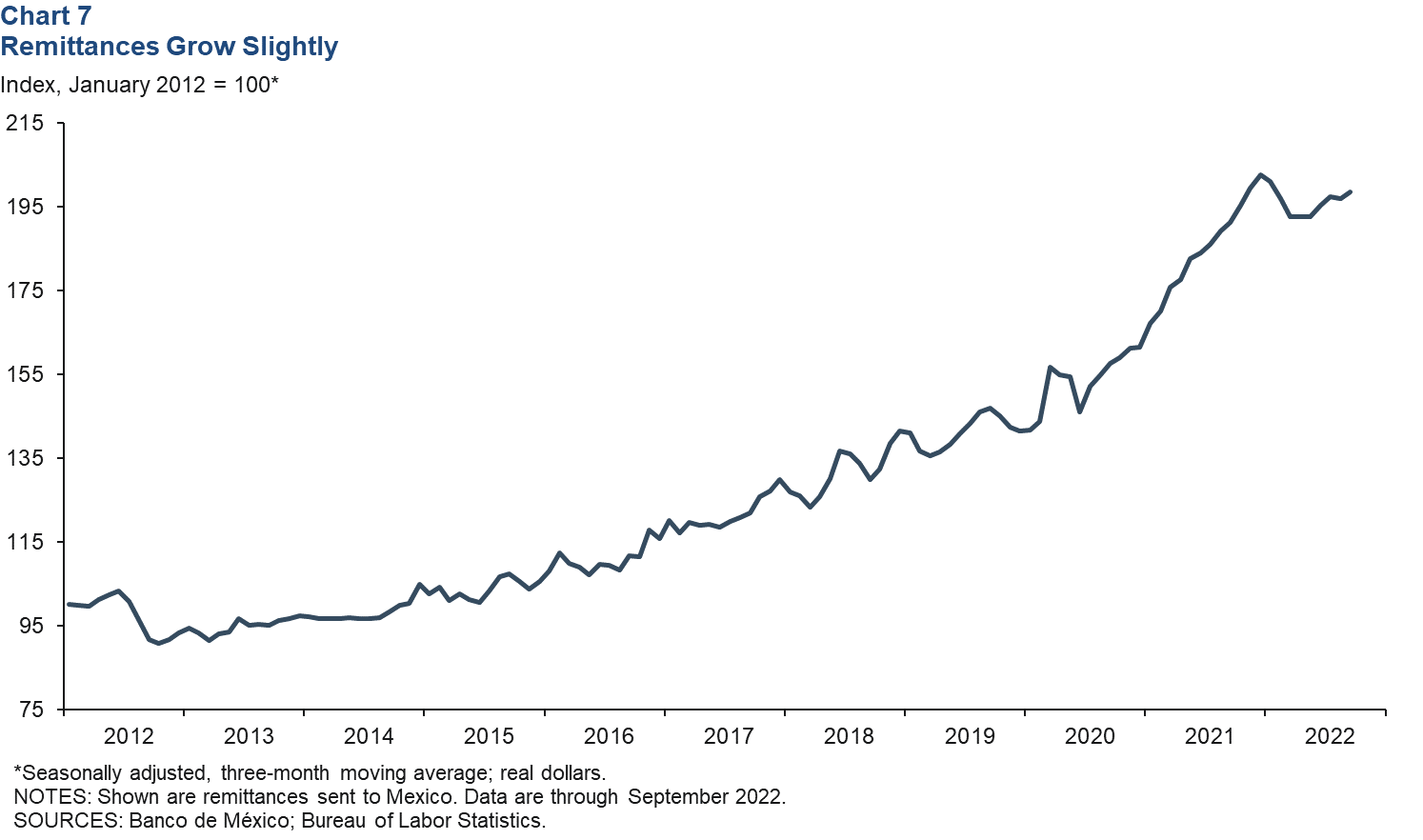
Foreign-owned government debt share continues downward trend
The three-month moving average of foreign‐owned Mexican government securities decreased to 16.3 percent in September, down 0.2 percentage points from its August value (Chart 8). The decline is due to a reduction in foreigners’ ownership of long-term securities. The extent of nonresident holdings of government debt is an indicator of Mexico’s exposure to international investors and a sign of confidence in the Mexican economy. It’s noteworthy that the measure has been on a downward trend since peaking in early 2015. Long-term government securities make up 83 percent of foreign‐owned Mexican public debt.
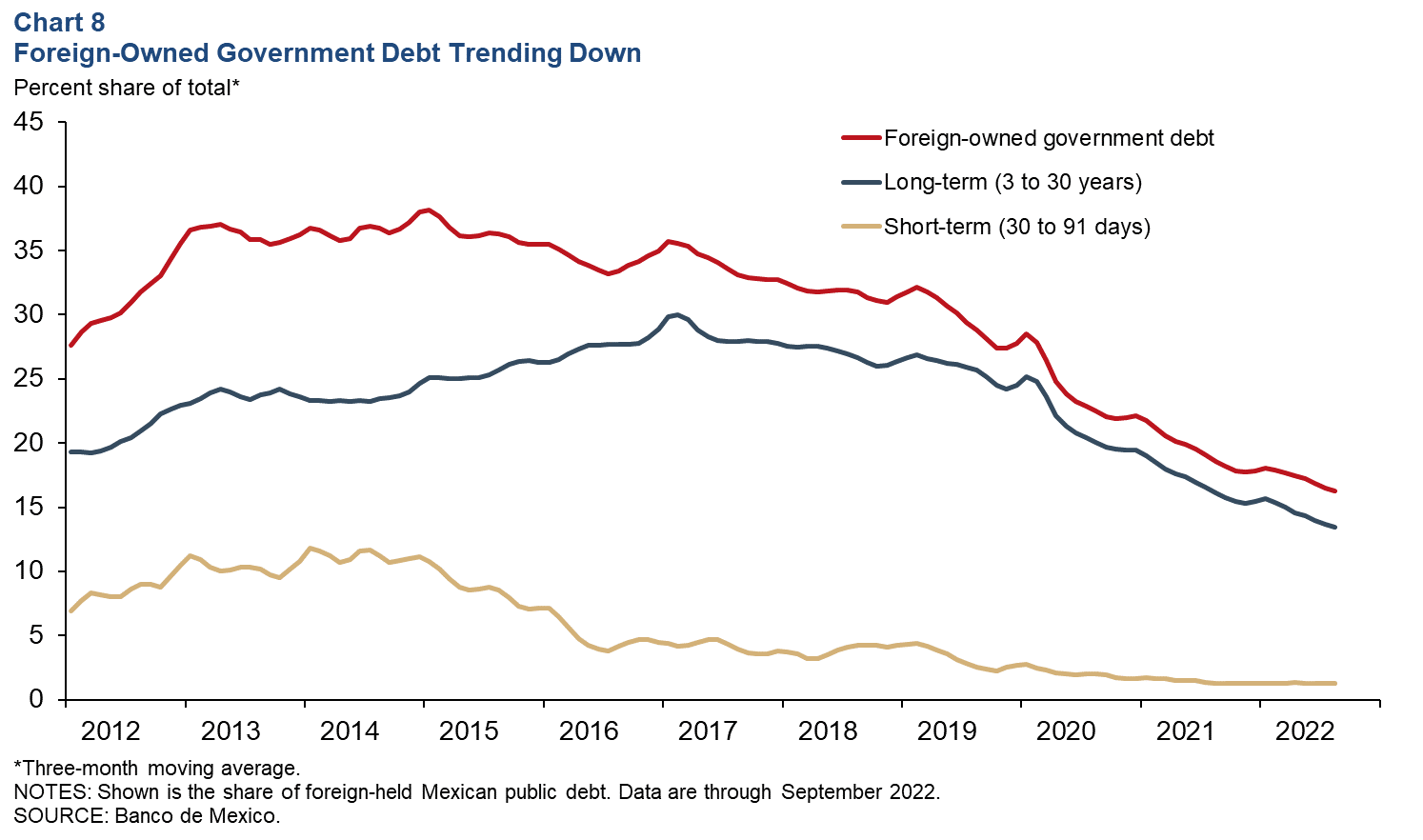
September inflation remains elevated, but growth moderates slightly
Mexico’s Consumer Price Index (CPI) was up 8.4 percent in October over the prior 12 months, down from September’s 8.7 percent gain (Chart 9). CPI core inflation (excluding food and energy) rose 8.4 percent in October over the previous 12 months. In November, Mexico’s central bank increased the benchmark interest rate by 75 basis points to a record 10.0 percent. It was the fourth consecutive 75-basis-point increase, following the U.S. Federal Reserve's latest 75-basis-point hike. In the public announcement accompanying the interest rate decision, the central bank noted that although some shocks show signs of subsiding, the balance of risks remains tilted to the downside.
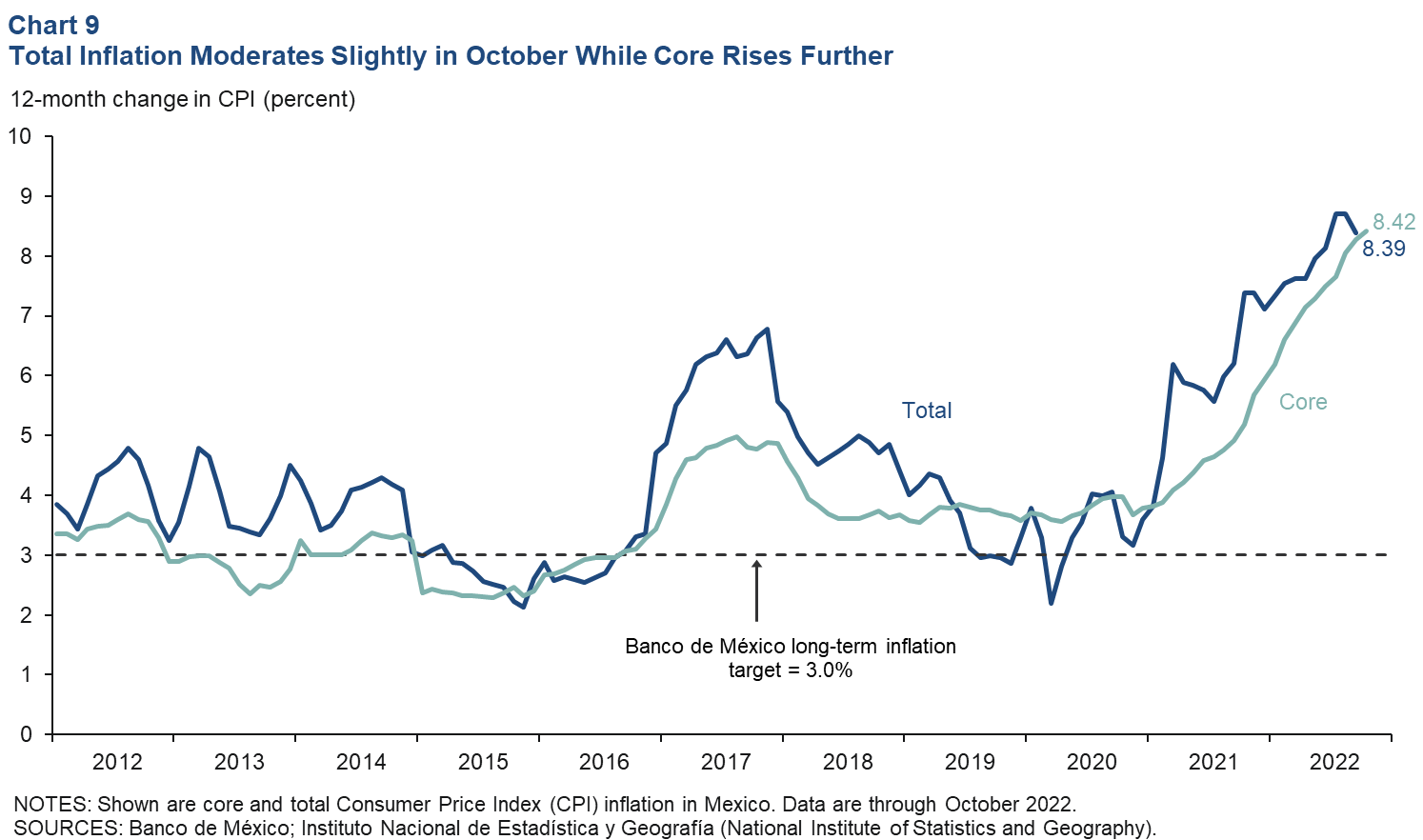
About the Authors
The views expressed are those of the authors and should not be attributed to the Federal Reserve Bank of Dallas or the Federal Reserve System.

